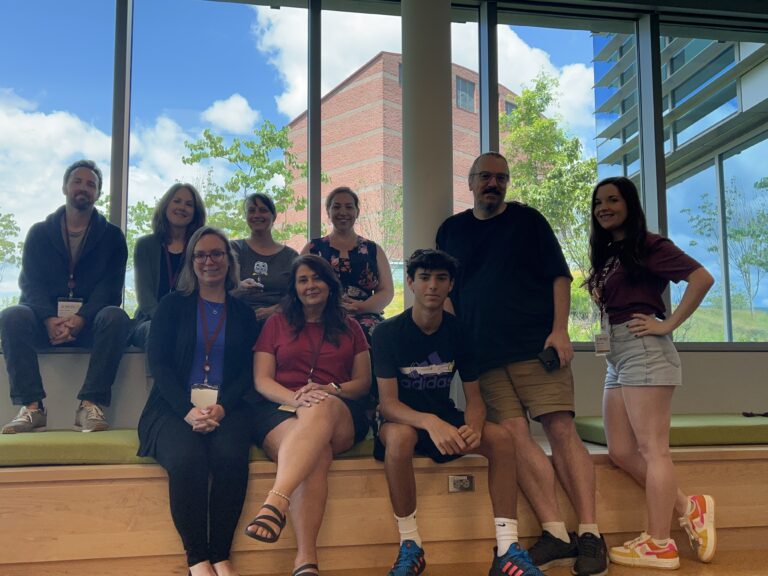Pope Francis’s trip to the United States in September will include a visit to a New York City school whose leaders are among those trying to save Catholic education with charter school innovations and other education reforms.
Our Lady Queen of Angels School is one of six run by the Partnership for Inner-City Education, which launched two years ago and pledged then to invest $9 million in scholarships, academic programs and capital repairs over three to five years.
With Catholic schools struggling to halt falling enrollments, Our Lady Queen of Angels and others are being released from the oversight of dioceses to try new ways to compete. They are tapping into the reforms created to turn around failing public schools. Among them: organizing into networks to raise money and manage finances, offering new professional development opportunities for staff, and raising academic standards for students.
[NATL] Francis' Papacy in Photos
One goal of the Partnership for Inner-City Education? "Putting Catholic schools back on the map and thinking of a way to create a next generation of Catholic schools," said the group's executive director, Jill Kafka.
'Coming Full Circle'
Charter schools have made steady gains in popularity since the first one opened 23 years ago in Minneapolis. Catholic education meanwhile has languished, as enrollments plunged and schools were closed.
U.S. & World
The first charter schools reproduced Catholic school traditions to provide an alternative to ordinary public schools, Catholic educators say. The attention to character building, family participation, high expectations, a no-excuse culture and discipline, down to uniforms and lines of students in the hallways, was typical of Catholic schools.
“And now it’s coming full circle and Catholic schools are learning a lot from charter schools about how to operate and how to better serve low-income students,” said Michael Q. McShane, a research fellow in education policy studies at the American Enterprise Institute in Washington, D.C.
Charter schools, privately run but publicly funded, appealed to some of those students by offering much of the same school culture without the tuition.
A 2012 study published by the Albany Law School in New York found that for every charter school that opened in New York state over the previous decade a parochial school closed. The study's author, Abe Lackman, argued that charter schools were a fundamental threat to parochial schools.

Changing Neighborhoods
The parochial schools faced other problems, as evidenced by their decades-long slide. Their labor force became more expensive as the number of nuns and brothers shrunk and they had to turn to secular teachers and administrators, McShane said. The neighborhoods around them changed from the older Irish and Italian immigrants to African-American families, many of them not Catholic, and new immigrants from Latin America where Catholic schools were attended by the affluent.
Our Lady Queen of Angels opened in 1892 in New York City’s East Harlem neighborhood. Today about two-thirds of its students are Hispanic, a quarter African-American and 71 percent are Catholic. A little more than two-thirds receive scholarships.
Before the Partnership for Inner-City Education took over its operation from the Archdiocese of New York, everything necessary to keep the school going landed on the desk of the principal, Joanne Walsh. She jokes that she became a master plumber maintaining the boiler. Educating students was just one of her jobs. By contrast, charter schools do a good job at separating academics and operations, Kafka said.

The partnership drew directly from charter networks. It visited some of the best-known, among them Achievement First, Uncommon Schools, Success Academies and KIPP public charter schools. It hired staff with backgrounds at charter schools, including the superintendent and chief academic officer, who had been at Achievement First, and the chief operations officer, who came from Victory Education Partners, a charter-school management company.
“We’re borrowing from a lot of folks out there,” Kafka said. “It’s a great environment for doing that right now.”
Over the summer the partnership has been spending $1 million renovating classrooms — and adding modern teaching tools such as white boards. From a low of 226 students, Our Lady Queen of Angels, is close to its capacity of 300. With the introduction of a new reading program, Core Knowledge Language Arts, all but three of its kindergartners are reading at a first-grade level.
Raesha Cartagena is a single mother whose daughter is entering the sixth grade at another of the partnership’s schools, St. Athanasius School in the Bronx. At one time, she held two jobs to be able to afford to keep her daughter in the school.
“I feel like it’s a place where I belong,” said Cartagena, 45, a development manager at the Hispanic Federation. “I feel they give me the support that I need. My daughter is still being taught good values that she is learning at home.”
Catholic schools like St. Athanasius can provide a sense of community, instill moral values and encourage children, she said.
Since the partnership took over the management of the schools, more money has been available for new books, tutoring and scholarships, she said. She applied for aid herself after she lost a job.
“Scholarships make such a tremendous difference,” she said. "It made a difference in my life last year in the middle of the school year and now that things are better I really am grateful."

Catholic schools across the United States are experimenting with changes, not all from the education reform movement, said Brother Robert Bimonte, the president of the National Catholic Educational Association. Often they involve the way the schools are organized.
“I wouldn’t say that they were taken from charter schools, public schools or any other schools," he said. "This has been an organic outgrowth in a variety of dioceses as they have sought creative ways to address the challenges of Catholic education.”
In Brooklyn for example, management of the schools will be assumed by a board of directors rather than the parish priest. A separate board of clergy will ensure that the schools, which are being renamed academies, will retain their Catholic character.
But like The Partnership for Inner City Education, other networks of schools say they were inspired by education reform movement.
The Independence Mission Schools in Philadelphia were formed to save a group of schools that the archdiocese could no longer support but which it thought still had an important mission in the city. It opened with 15 schools in 2013, maintaining the schools as Catholic schools but operating under an independent body.
“What we’re doing here in Philadelphia is we’re taking this really strong foundation of Catholic schools and then we’re going outside to the other sectors to see what’s working in urban education and we’re bringing that to bear in our schools,” said Anne McGoldrick, the Independence Mission Schools' president.
[[318261161, C]]
On the business side, the network marketed the schools, making sure the neighborhood knew they were for children of all faiths. Each of the Independence Mission Schools has a set of books, unlike a traditional Catholic school, which was part of the finances of a parish or diocese. It introduced an online application process that gathered financial aid from everybody so that parents would know exactly how much they would have to pay. For the average family the cost is just under $2,000 on a tuition of $4,500 a child.
To improve academics, it added a summer reading program and what is called blending learning, in which students use online media, and other education technology.
Stressing Their Values
In cities with large numbers of charter schools, non-Catholic families might not enroll their children in Catholic schools as they once did, McShane said. If Catholic schools are to thrive they must stress what they can offer that charter schools cannot: their Catholic values.
“If they try to beat charter schools at their own game, they're are competing against something that's free,” he said.
The five schools that form the Catholic Partnership Schools in Camden, New Jersey, have an enrollment of about 1,000, a number that has remained steady despite alternatives in the area, said Sister Karen Dietrich, the executive director.
“What that says to us is that there is definitely a place for Catholic schools on the landscape of education in our cities,” she said. “So that despite the other choices, our families are choosing a faith-based school.”
As the partnership researched ways to operate, the chairwoman of its board of directors, Christine Healey, said that it was obvious that Catholic schools could no longer simply keep children safe while performing a bit better than public schools.
“If Catholic schools in inner cities were to survive, they really needed to hit it out of the park academically,” she said.
[[320211541, C]]
Academic excellence did not originate with charter schools, nor the idea that Catholic schools should have some independence from the dioceses, she said. What did influence the Catholic Partnership Schools was raising money from the same hedge fund managers and others who were investing in charter schools. The rigor that is being asked of the charter world is now being asked of the urban Catholic school world as well, she said.
That means using data to measure a school’s success and being transparent about finances, she said.
“They are investing in both sectors,” she said. “They are investing in the charter sector and getting lots of data and lots of rigor in terms of what the return on investment is. So they’re asking the same kind of thing from the Catholic schools.”



